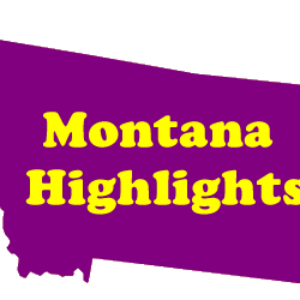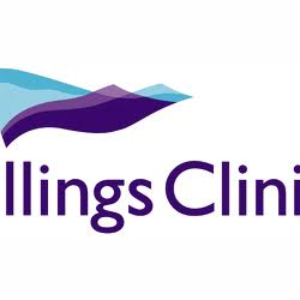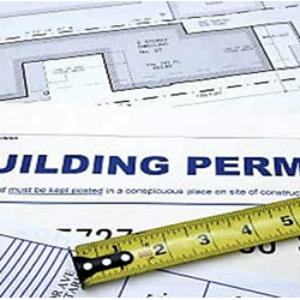Plowing of Glacier National Park’s roads has begun. Crews started on the east side of the pass on March 25 and the west side clearing of Going-to-the-Sun Road should begin during the first week in April. Backcountry reservations opened last week for the 2022 season.
The founders of Alchemy Lounge on Kalispell’s First Avenue, owned by the Costa family, has opened the newly remodeled lounge. Alchemy Lounge is located at 139 1st Avenue West in Kalspell.
West End Farms, a development that would be a mix of high- and low-density housing with various components such as community gardens is asking the neighborhoods around Hellegate Elementary School for their response to the 240 housing unit development.
Montana gained roughly 3,500 construction jobs during the pandemic from February of 2020 to January of 2022. That’s an 11.4% increase, the highest percent increase of any state in the country, according to the Associated General Contractors of America. Almost half the states in the U.S. lost construction jobs during that same time period.
The Higgins Avenue Corridor Plan began last year with efforts aimed at understanding the priorities of residents and business owners for this part of downtown Missoula. With this input in mind, the project team has developed several alternatives and is seeking comments. The community will have multiple opportunities to view the Higgins Avenue Corridor Plan and provide feedback.
Desert Mountain Broadcasting purchased five radio stations in Bozeman, formerly owned by Reier Broadcasting Co. recently. Desert Mountain Broadcasting is building brand-new studios for the five stations as they come back on the air.
Backcountry, an online retailer of outdoor gear and apparel, plans to move into the Gallatin Laundry Company building in Bozeman, at the corner of East Babcock Street and South Bozeman during the summer of 2022. The Utah-based online retailer has three retail storefronts. Two are in Utah in Park City and West Valley City, and the other in Boulder, Colorado.
Clean up of the Ponderosa building property has remained on hold since the February 13 fire in downtown Glendive. The Glendive City Council recently heard concerns from several business owners about the effects and threat the Ponderosa building has on their businesses. Following the fire that destroyed the property, two freestanding walls of the Ponderosa building remain and half of the block is fenced off, preventing traffic in the area.
According to oil industry analysts they do not think high oil prices will cause a surge in drilling wells in North Dakota and Montana’s Bakken. Rig counts are up a small number in both states. Higher oil prices have been prompting some companies to restart marginal wells that had been uneconomical at past prices, Most of these wells are in Montana. Lack of workers and supply chain logistics remain challenges in both Montana and North Dakota,
Older workers, workers with disabilities, veterans and workers who have been involved in the justice system all offer labor opportunities for businesses willing to get creative with their recruitment. Retirees are the largest population of potential workers who aren’t involved in the labor force, according to statistics from the Montana Department of Labor and Industry indicating 60% of those not in the labor force list retirement as their primary reason for non-participation.
Pursuit Glacier Park Collection has announced their purchase of the Glacier Raft Co. in West Glacier. Glacier Raft Compnay has been in business for 46 years. The sale includes 50 acres, equipment, 14 log cabins, a main lodge, retail store and wedding venue. Pursuit owns the Glacier Park Lodge, the Grouse Mountain Lodge in Whitefish, the Prince of Wales Hotel in Waterton Lakes National Park plus other lodging and recreational businesses in the area. Glacier Raft Co. runs raft trips down the Middle Fork.
Crumbl Cookie had their grand opening on the 1st of April in Helena. The address is 2030 Cromwell Dixon Lane #J.
Montana’s latest oil sale ran from Feb. 22 to March 1. Roosevelt County had the highest prices per acre — ranging from $110 to $285 an acre. Western Shale put in the winning $285 per acre bid, for 360 acres. Irish oil, meanwhile, took the other three tracts totaling 779 acres for a total of $210,225.
Schlumberger, Halliburton, and Baker Hughes have all announced they have begun to draw down activities in Russia and will make no new investments.
Butler Machinery Company president announced the purchase of existing buildings in both Watertown, South Dakota, and Sidney, Montana—a brand new territory for Butler. The Sidney facility, formerly B&B Rentals near the intersection of MT-16 and MT-23, will open as a Butler Ag Equipment store and will be Butler’s first store in Montana and 20th store location overall. Butler Ag Equipment is a division of Butler Machinery Company, focusing only on agriculture equipment lines. The new Sidney location will be Butler’s fifth store branded as Butler Ag Equipment and will offer the full line of AGCO equipment brands, select CLAAS equipment and other smaller ag-focused lines, as well as ag technology, parts and service.
Fort Harrison VA Medical Center in Helena has received a five-star patient experience rating from Becker’s Healthcare Hospital. The Becker’s Healthcare survey compiles a list of the best hospitals around the country. Fort Harrison VA has many services for former and current military men and women, such as primary care, specialty services and mental health.
Hamilton based Cultured Travel LLC is a boutique travel agency founded on the belief that travel can change the world through connection. The company owner is Valerie Edman. The company specializes in arranging luxury experiential travel.
U.S. shale oil and gas producers Oasis Petroleum Inc. and Whiting Petroleum Corp have merged. The combined value of the two companies would be around $6.07 billion, according to Reuters, based on Oasis valued at $2.80 billion and Whiting at $3.27 billion. Both companies filed for Chapter 11 bankruptcy in 2020 after the energy industry reeled under an unprecedented crash in oil prices due to the COVID-19 market mandates, with Whiting the first publicly traded shale producer to file for bankruptcy when it did so in April of that year.
North Dakota’s biggest oil driller said it will commit $250 million to help fund a proposed pipeline that would gather carbon dioxide produced by ethanol plants across the Midwest and pump it thousands of feet underground for permanent storage. Continental Resources, headed by Harold Hamm, discussed the investment into Summit Carbon Solutions’ $4.5 billion pipeline at an ethanol plant in eastern North Dakota. The plant is one of 31 ethanol facilities across Iowa, Minnesota, Nebraska and the Dakotas, where emissions would be captured and piped to western North Dakota and buried deep underground. The project is one of at least two major CO2 pipelines planned for the Midwest. Navigator CO2 Ventures is planning a 1,200 mile pipeline through Iowa, South Dakota, Nebraska, Minnesota and Illinois. The Trump administration in 2018 gave North Dakota the power to regulate underground wells used for long-term storage of waste carbon dioxide. The state has since invested heavily in carbon capture and sequestration technology.
Gallatin County’s residential real estate market with low inventory and strong demand continues to fuel higher prices. The median sales price for condos and townhomes saw the most significant increase at 85.3%. In year-over-year numbers, median sale prices are up 47.9% for all property types. New single-family listings were down 26.3% in February 2022 compared to last year, falling from 118 to 87. Pending sales decreased 10.4%, from 96 to 86, and closed sales decreased 6.1%, from 82 to 77. The average number of days homes spent on the market was down 11.9%, from 42 to 37. Median sales prices jumped 48.7%, from $602,500 to $896,000, and sellers received 99.5% of their list price, a slight increase from 99.1% last February. The inventory of homes for sale fell 36.8%, from 144 to 91. The months supply of inventory decreased 30%,



